C
cowboyjoe
17 years ago
The tire went flat on my wheelbarrow, and came loose from the rim. I
have tried everything to get that tire inflated, but can not get it to
seal well enough around the rim to be able to get the air to start
filling it. There's got to be some sort of trick to this. Anyone
know? The tire is not bad, it just wont expand to the rim. I have
tried to lean on it, work it against the rim with my hands (I can get
one side on the rim, but not the other), and even tried to tie a rope
tightly around it. I never have this much trouble with car tires as I
am with this stupid little tire.
Joe
Loading thread data . ..
M
m Ransley
17 years ago
Put an inner tube in it or take it to a service station or tire shop a large compressor can usualy put out enough air fast enough to blow it in shape
J
JimL
17 years ago
1. Remove the valve stem to increase the volume of air going into the tire. 2. Clean throughly and then swab soapy water all the way around the rim and tire. 3. Wrap a 15 foot long cord or rope around the middle of the tire and pull tight so the tire collapses from the rope. This forces the tire edge to touch the soapy rim edge. You will need hitch loop in the rope to pull tightly enough to collapse the tire. 4. Inflate till it pops. 5 reinstall valve stem and inflate .
4. Inflate till it pops. 5 reinstall valve stem and inflate .
B
borgunit
17 years ago
A trick I use is those little ratcheting straps you can buy (to hold down cargo or whatever on a vehicle). Just wrap it around the tire and ratchet it till the "bead" expands out to the rim. A little water helps too. It shows where it may leak and helps the tire to slide and fill in the rim.
H
HotRod
17 years ago
OR if your really stuck, spray in some starter fluid or other flammable aerosol spray and then light it, the pressure of the ignition will seal the tire enough for you.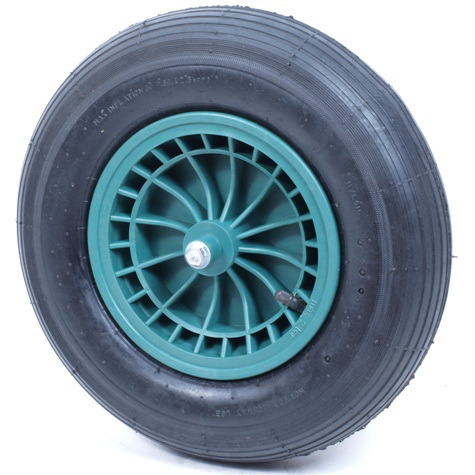 I've seen 4x4 guys use this out in the sticks.
I've seen 4x4 guys use this out in the sticks.
L
longshot
17 years ago
you do realize that a service station would charge you about 5 bucks to do this & it would only take about 3 minutes, right?
W
World Traveler
17 years ago
Been there, done that. Used a belt clamp and a neighbor's shop compressor, which puts out more air than my little battery-powered Campbell Hausfeld inflator. In about two seconds, it seated the bead, inflated the tire, and tore the belt clamp in two. Next time, I'll take the wheel off the wheelbarrow and take it to a local gas station with an air pump that I can control a little better.-Step-3-Version-2.jpg/670px-Fix-a-Wheelbarrow-Tire-(tubeless)-Step-3-Version-2.jpg) Regards --
Regards --
J
jackjohansson
17 years ago
Use a match & propane... no.. really...
I once saw video on Discovery channel about 4 wheelers in Iceland (of all places) and it showed a really neat trick... when in the outback (so to speak) and they need to re-seat a tire they fill it with propane, (as best they can, obviously with it unseated some leaks out, but they seem to get enough in) then they toss a match at it. It literally explodes into a momentary fireball, but somehow the explosive action is enough to seat the tire. I assume they come back and let Propane out, and replace with air.. but the program was not a detailed how-to, it just showed the video of them exploding the tire back onto the rim. I am not nuts or desperate enough to try it, but it was some pretty cool video. ..
..
S
Stormin Mormon
17 years ago
I had the same problem. I stuffed as many crumpled news papers as I could into the tire, that helped a little.
I think the real answer is go to the tractor supply place and get an inner tube.
S
SteveB
17 years ago
What self-respecting alt.hr'er would do that?
P
Phil Munro
17 years ago
The tire places in our area give better service than that, and will usually help with something like this for $0.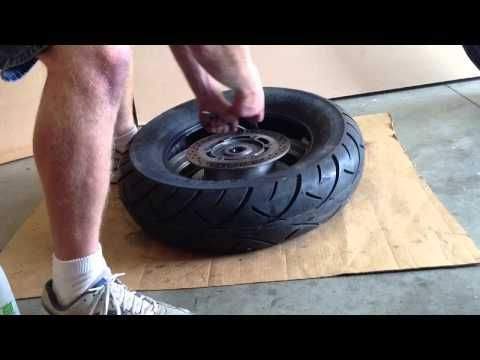 0. --Phil
0. --Phil
H
HotRod
17 years ago
NOPE, I would start with a little propane and work my way up to more, this really does work.
J
Jeff Wisnia
17 years ago
WOWZA! I do believe it, but I wonder who the hell was the mad genius who first thought of trying that?
I wonder if he was someone who had worked with explosive forming of heavy sheet metal, and figgered, "Why not?"
Jeff
H
Hotrod
17 years ago
This is done every day of the world. Truck tires are a bear to install on the road without a large air line and bead seating ring. Once you get the tire on and off with spoons, make a couple fast circles around the wheel, inside the tire, with starting fluid. Up and over the tire to the ground. toss a match at it, and POOF! the bead is seated. With over the road truck tires, you still have to add air afterwards. Ask any truck mechanic and he'll tell you he has probably done this before.
Truck tires are a bear to install on the road without a large air line and bead seating ring. Once you get the tire on and off with spoons, make a couple fast circles around the wheel, inside the tire, with starting fluid. Up and over the tire to the ground. toss a match at it, and POOF! the bead is seated. With over the road truck tires, you still have to add air afterwards. Ask any truck mechanic and he'll tell you he has probably done this before.
I
Irving Drinkwine
14 years ago
I have a wheelbarrow that has a tubeless tire. The tire went flat at
some point and sat that way for a while. Now the tire is out of shape
and I cannot get it to hold air.
Any suggestions on how to fix this short of buying a new tire/wb?
Put a tube in it show how perhaps?
Thanks
ID
Loading thread data .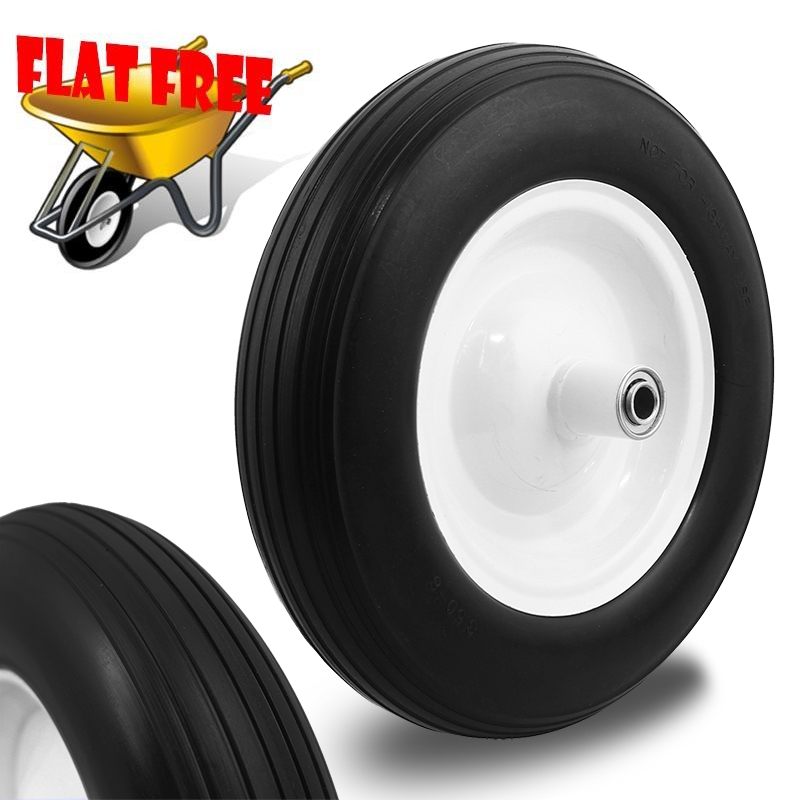 ..
..
B
buffalobill
14 years ago
temporarily substitute your wheeled garbage can tote, do not overload.
B
Bob
14 years ago
Had the same problem with a garden trailer tire. I took the wheel & tire to a local discount tire store and they fixed the problem for nothing. Bob-tx
C
Colbyt
14 years ago
You can try putting a rope around the rim and tire and pulling it tight to force the tire into contact with the rim.
You can also take the wheel to a tire store and have a tube added. I think I paid $8 for tube and labor. Haven't had a flat for years now.
Colbyt
P
Phisherman
14 years ago
Tie a rope around the tire and tighten with a tourniquet. Quickly fill the tire with air and it will self-seal.
J
Jim Conway
14 years ago
I have the same deflation problem, but how exactly does the rope get tied? Does it wrap around the circumference of the tire (i.e. the tread if the tire were vertical) or does it get wrapped around the rim and tire together (horizontal if the tire were vertical). Thanks!!!
Thanks!!!
C
Caesar Romano
14 years ago
On Fri, 27 Jun 2008 05:46:14 -0700 (PDT), Jim Conway wrote Re Re: How do I inflate a tubeless wheelbarrow tire that fails to seal:
Yes, wrap it around the circumference of the tire. Even better than a rope is one of those ratchet tie-down belts that they sell in automotive departments. The kind that are used to secure a load in a truck bed or whatever. Wrap it around the circumference of the tire, pull it tight and then use the ratchet to tighten it enough to get the tire against the rim.
H
hallerb
14 years ago
around the tread area, then put something like a tire iron in the rope, twist, reducing diameter of tire add air fast, no slow fill will work.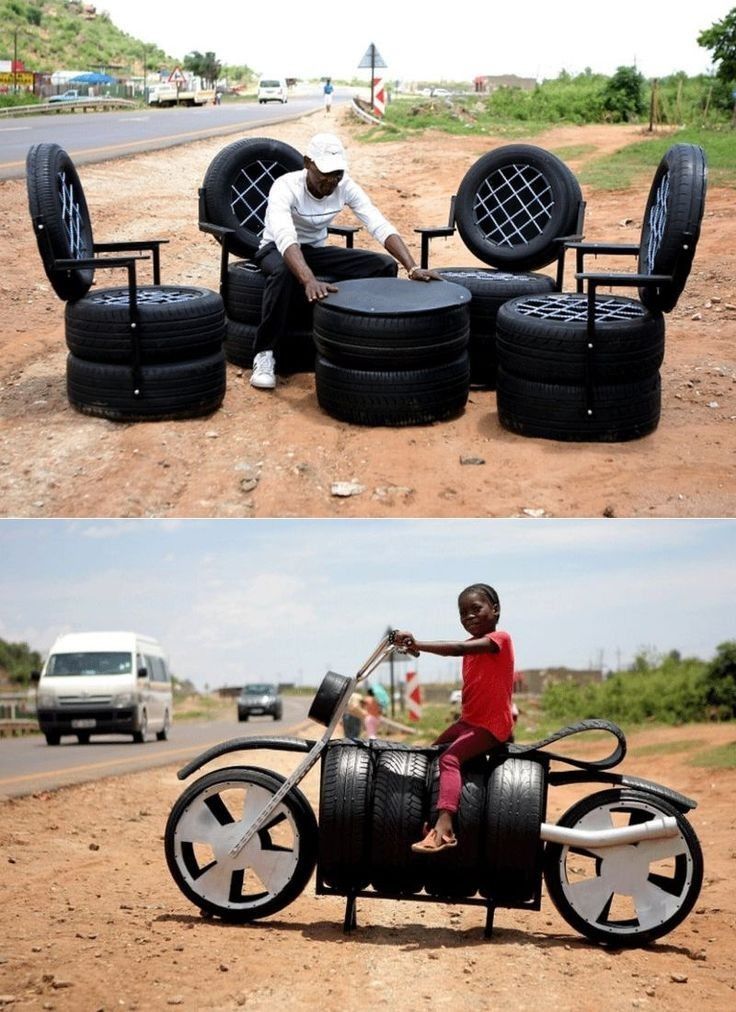
if the tire went flat once it WILL again, add tube at real tire store, for long term hassle free fix
D
dicko
14 years ago
In all likelyhood, you'll need an air compressor to move a lot of air real fast into that tire. A hand pump isnt going to hack it.
-dickm
J
JC
14 years ago
I use "Slime" in all our small equipment tires. It's easy to install and when done right, ends all your inflation/deflation problems for good.
Z
Zephyr
14 years ago
Spray some flamable liquid from a spray can ( wd40 or such) inside the tire, hit it with a match, the expanding air will seal the tire, just be sure not to catch the thing on fire.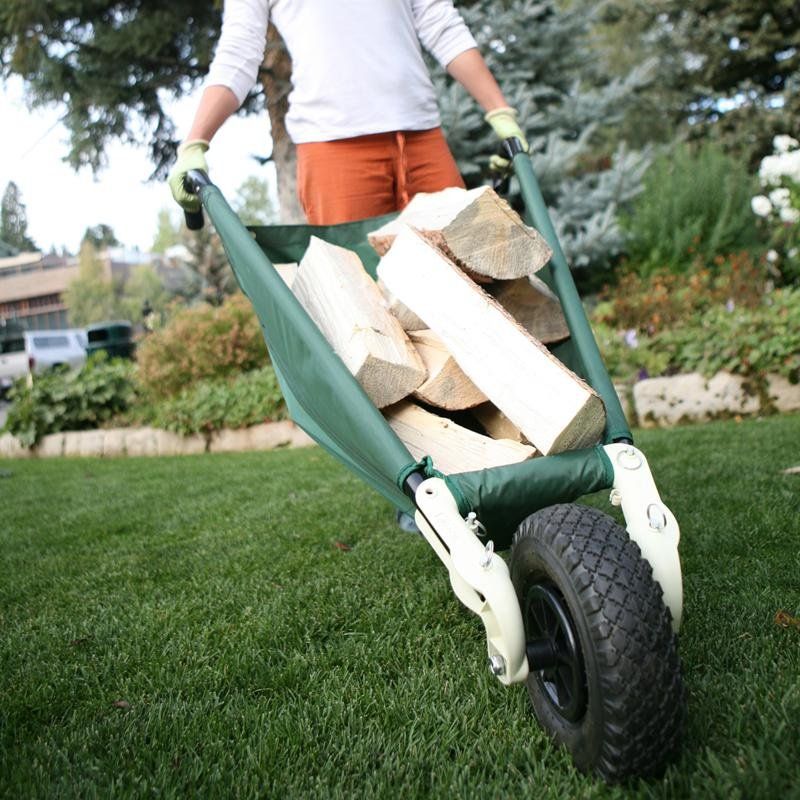 ( ed's note - ive never done this, just heard about it being done)
( ed's note - ive never done this, just heard about it being done)
R
Ralph Mowery
14 years ago
Lay the tire flat on the ground and wrap the rope around it the same as the tread. YOu do not put the rope so thatit crosses the rim, but goes around it the same as the tire. Put the rope in the middle and start tightning it up. The tire will expand the sidewalls and touch the rim. Then you put the air to it.
D
Dan Espen
14 years ago
Others have given advise about repair. In my case, I couldn't get any of those methods to work.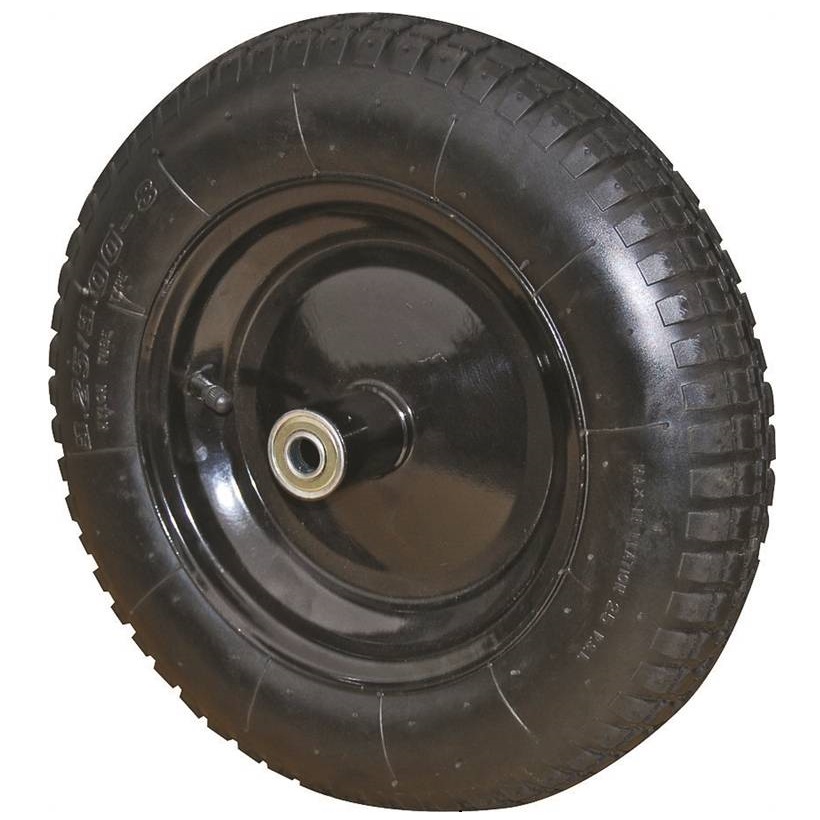
I called the manufacturer for instructions. They took my address and sent me a free replacement. Turns out the tire has a lifetime warranty. Bought the wheelbarrow at HD.
R
RLM
14 years ago
I find that when a small tire goes flat repeatedly it is better to remove the wheel and remove one side of the tire in order to pack the tire with rags, old foam padding from carpeting or anything that keeps the tire from going so flat that it comes off the rim and looses it's seal. Then in the future you can re-inflate the tire when you need it again. I have done this on lawn tractors, yard trailers that I pull with the lawn tractors, a four wheel wagon with pneumatic tires, and a wheel barrow. I don't use them all that often and sometimes when I do the tire is lacking air but is still drivable to the compressor and the bead seal is not compromised to add air.
I live in an area where we have sand spurs that are able to put extremely small holes in tubeless tires. I have cleaned the fix-a-flat remains out of tires and know this doesn't hold air for long.
By the way, I have made a hold down tool using all thread rod to hold a small tire tight to the top of my table saw to remove one side of the bead of the tire while I stuff it with rags. So far the rags have held up better on the lawn tractors but the foam carpet padding has worked ok on the wheel barrow because I store it up on it's nose with the handles against the wall so it never has any weight to collapse the tire when flat.
J
Jerry
14 years ago
Ditto that suggestion. I do that at least once a year with my wheelbarrow tire. Wrap the tiedown, rachet it down, fire up the compressor, and I'm good until the next time.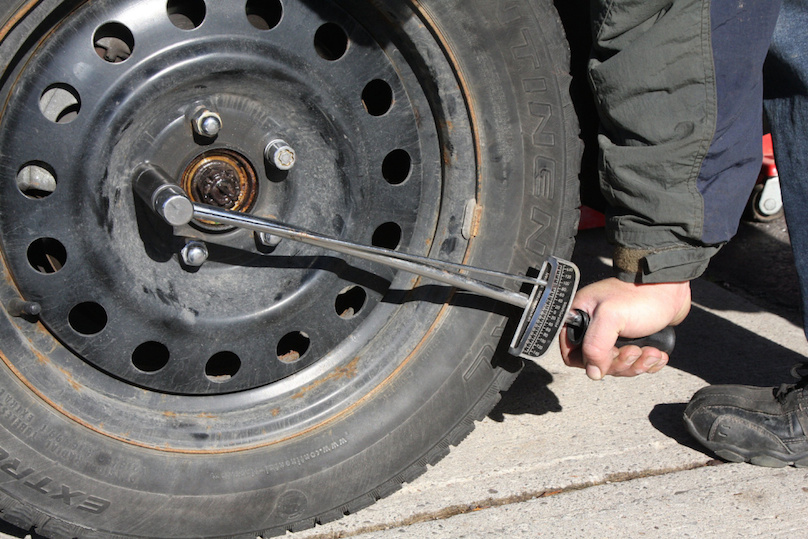 If it's being real stubborn, I'll smear some petroleum jelly around the bead on both sides, helps it seal a little better.
If it's being real stubborn, I'll smear some petroleum jelly around the bead on both sides, helps it seal a little better.
Jerry
A
Anthony Diodati
14 years ago
That is a good Idea. Don't try this on a car or motorcycle tire though.............LOL Tony
S
SteveB
14 years ago
Several ways:
Buy a device you put around the tire and inflate with air. If fills up, contracts the tire so it makes bead contact, then inflate.
Make one out of a piece of rope and piece of mop handle. Put around circumference of tire and twist broom handle. Add air with a chuck that bites on the stem and stays there. Twist rope until bead makes contact.
Put around circumference of tire and twist broom handle. Add air with a chuck that bites on the stem and stays there. Twist rope until bead makes contact.
Spray starter fluid at tire and ignite with Bic lighter. Resultant explosion will put bead onto rim and remove excess facial and eyebrow hair.
Use one of those ratchets to squeeze the circumference of the tire until it makes bead contact. If you can find one that short.
Or get one of the pull types that don't have the ratchet.
Steve
S
SteveB
14 years ago
I have the same deflation problem, but how exactly does the rope get tied? Does it wrap around the circumference of the tire (i.e. the tread if the tire were vertical) or does it get wrapped around the rim and tire together (horizontal if the tire were vertical).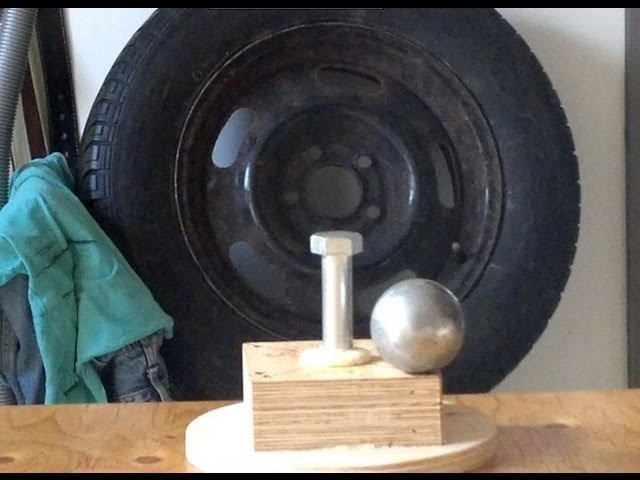 Thanks!!!
Thanks!!!
Put the rope around the biggest part of the circle. Leave an excess loop to put in a handle. Twist handle.
steve
S
SteveB
14 years ago
"Ralph Mowery" wrote
It's easier if you use a chuck that bites the stem, then you don't have to use your third hand to squeeze the air supply.
Steve
S
SteveB
14 years ago
"JC" wrote
What works better than that is a solid rubber tire.
Published: July 13, 2018 2:54 PM
A flat wheelbarrow tire or tires with slow air leakage can be frustrating. Instead of spending time assessing the damage and the root cause of the problem, we sometimes just opt for the costly solution of changing a tire or even throwing the car away. It is not uncommon to see abandoned cars in landfills and waste sites that could easily be returned to service with a minor tire repair or tube replacement. Repairing a flat tire on a wheelbarrow or buying and installing a new tire is an easy way that saves money, because everyone can do this on their own at home.
All you need to remove and replace a tire from a wheel is a large flathead screwdriver and a hand pump. You will also need a key to remove the wheel and tire from the car. This is easily done by loosening one or both of the brackets holding the axle to the wheel.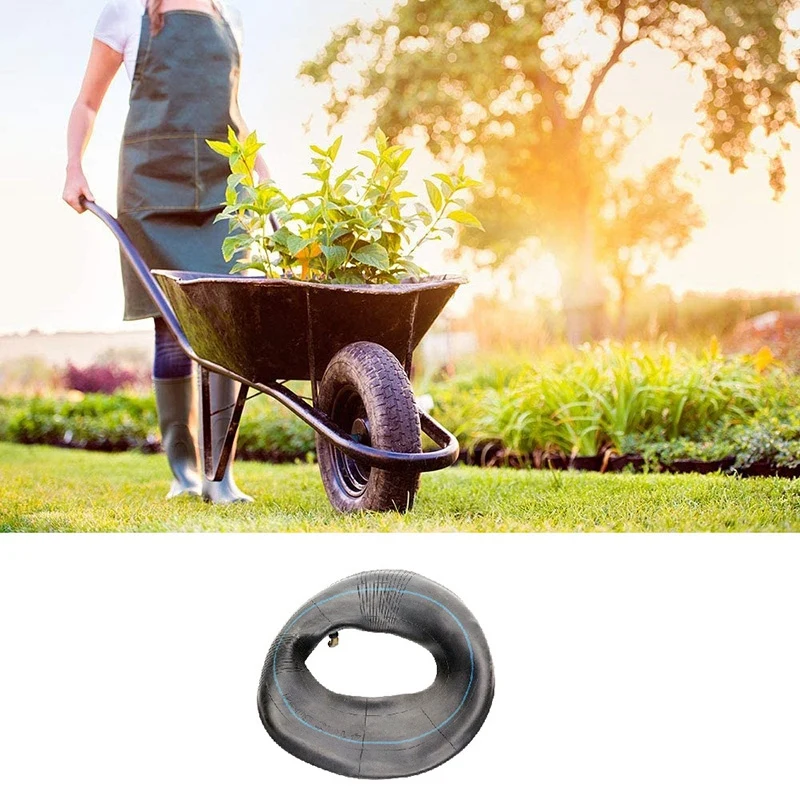 If you have a tubeless tire that is punctured in the tread area of the tire, you will need a repair tool instead of a flathead screwdriver.
If you have a tubeless tire that is punctured in the tread area of the tire, you will need a repair tool instead of a flathead screwdriver.
As soon as the wheelbarrow tire is flat, you can carry out a thorough visual inspection. First, check the wheel for damage and the tires for obvious sources of leakage. You can also check the wear level of the tread rubber and the number of cracks in the tire due to dry rot. If the tire is badly rotted and has deep cracks, the tread side is worn and doesn't provide enough traction, you should consider purchasing a replacement tire. A wheelbarrow tire can cost anywhere from $15 to $40. Products will be delivered right to your door, but a new car will cost about $150 or more. If the car itself is in good condition, a new tire can make it perform even better.
If the source of the leak is not easily identified on a tubeless tire (for example, there is a hole or an object stuck in the tread), you need to inflate the tire to determine this.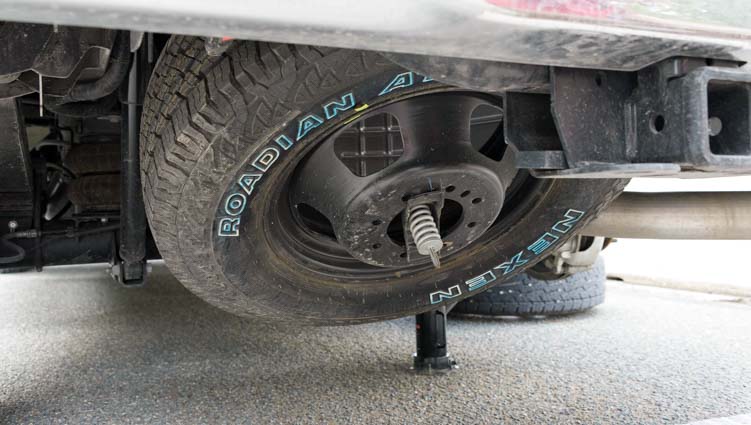 If the tire is completely flat and you can't easily get to the wheel flange, you can tighten the rope around the outside of the tire. This will help press the tubeless tire against the wheel and get a good seal. If the wheel itself is severely bent, you may need a new one, however, small dents in the wheel flange are usually not a problem, especially with tubular tires. Adding tubing to a tubeless tire and wheel assembly is a cheaper alternative to buying a new wheel even if it is damaged and leaks air between the wheel and the tire itself.
If the tire is completely flat and you can't easily get to the wheel flange, you can tighten the rope around the outside of the tire. This will help press the tubeless tire against the wheel and get a good seal. If the wheel itself is severely bent, you may need a new one, however, small dents in the wheel flange are usually not a problem, especially with tubular tires. Adding tubing to a tubeless tire and wheel assembly is a cheaper alternative to buying a new wheel even if it is damaged and leaks air between the wheel and the tire itself.
The tubular type tire must be removed from the rim. Use a flathead screwdriver to pry the tire off the rim as shown in this video. As soon as one part of the tire is above the wheel flange, the other side of the tire will easily unscrew. Turn the wheel and repeat for the other side of the tire. Be careful not to pinch the tube between the screwdriver and the wheel flange. A tubeless tire can often be repaired by leaving the tire on the wheel and using a plug.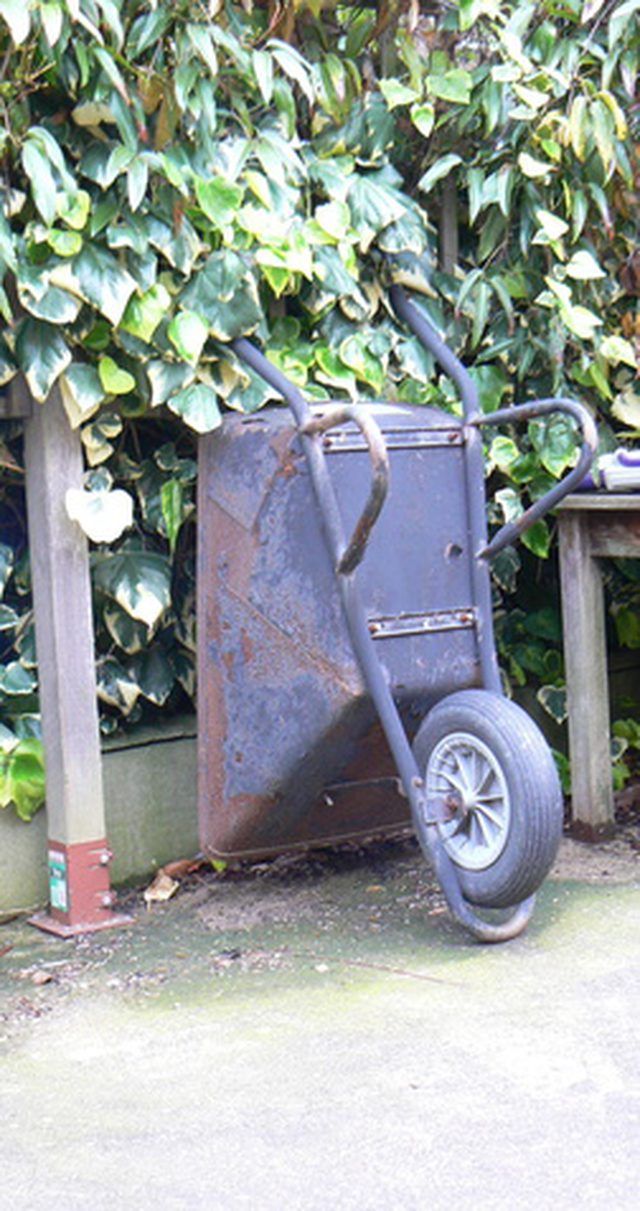 It is much easier to repair a hole in a tubeless tire, but it does require some specialized equipment. Here is a video on how to connect a tubeless tire. Once the tire is in and the fork is cut off, the tire and wheel are ready to be put back on the wheelbarrow.
It is much easier to repair a hole in a tubeless tire, but it does require some specialized equipment. Here is a video on how to connect a tubeless tire. Once the tire is in and the fork is cut off, the tire and wheel are ready to be put back on the wheelbarrow.
Once the tube is removed, it can be inflated and placed in a bucket of water to find the source of the leak. Bubbles will identify even minor spike damage, which will be more difficult in other cases. The area around the hole should be reinforced with fine sandpaper or wood. Coat the area to be repaired with rubber cement and attach the patch. If the tube cannot be repaired and the tire is still in good condition, consider purchasing a replacement tube. It will cost less than $10, which is not comparable to the cost of a new car or even a new tire and wheel.
Once the repaired tube is fully cured, it's time to put the tire and tube back on the wheel. First, insert the deflated tube into the tire and reinstall one side of the tire back into the wheel. At this point, for a tubular type tyre, you will need to install a tubular valve in the wheel bore. After alignment, you can put on the second side.
At this point, for a tubular type tyre, you will need to install a tubular valve in the wheel bore. After alignment, you can put on the second side.
The tire or pipe is now ready for inflation. Change the axle and attach the entire wheel and tire to the wheelbarrow.
If your flat tire or wheelbarrow tubular is too damaged or worn out, then Shiny-Online.by is the best option for buying inexpensive wheelbarrow tires. Here is a wide range of tires for wheelbarrows at low prices. Knowing the right tire size, you can easily find a replacement tire by making a quick and convenient order with door-to-door delivery.
Reifen
Contents:
Every gardener and summer resident constantly needs to transport cargo across the territory of the plot or garden.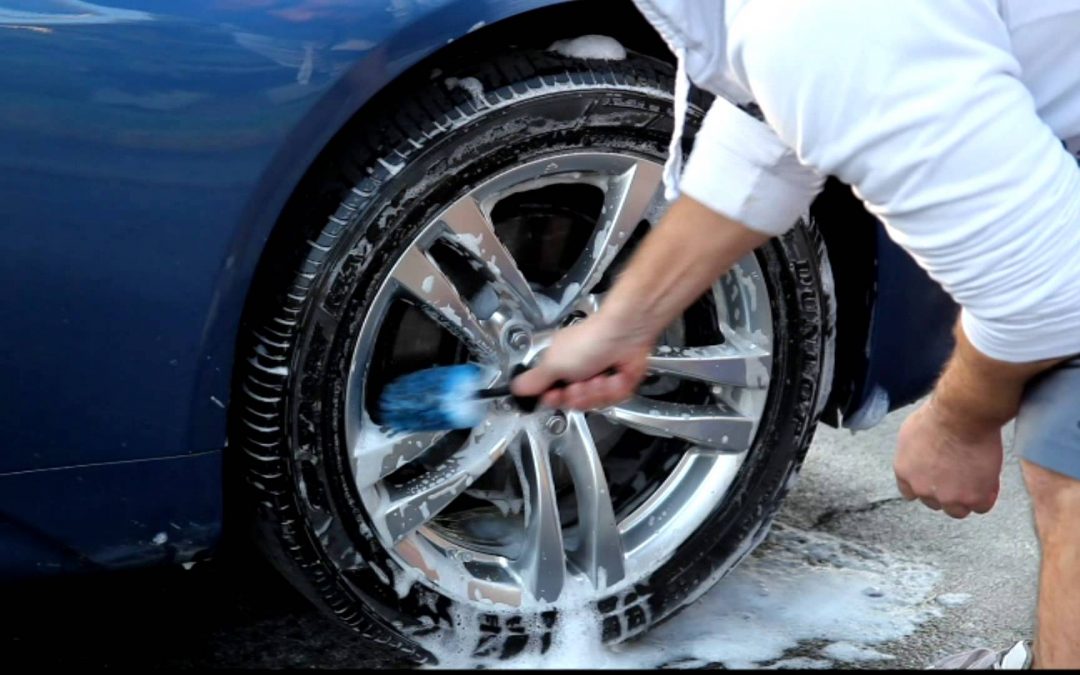 The need to transport fertilizers for feeding plants or building materials can arise at any time, so the purchase of a garden wheelbarrow is often required. Devices for transporting goods over short distances differ in many parameters: size, number of rollers, tire material, etc. And you need to pay attention to all this when choosing a wheelbarrow in a store.
The need to transport fertilizers for feeding plants or building materials can arise at any time, so the purchase of a garden wheelbarrow is often required. Devices for transporting goods over short distances differ in many parameters: size, number of rollers, tire material, etc. And you need to pay attention to all this when choosing a wheelbarrow in a store.
The wheelbarrow for a garden wheelbarrow can be pneumatic (with a tire into which air is pumped), on molded rubber and polyurethane. At the same time, the material of the disk is not so important, since it is the tire that is subjected to the maximum load during operation.
Wheelbarrow wheel
The rim for pneumatic wheels is based on a treaded tire. Inside, there is usually a chamber, which, for reliability, is made using two layers of rubber. Discs can be made of metal or polypropylene. If the manufacturer provides a bearing at the fixing point, then the trolley will move more smoothly.
Advantages:
Pneumatic wheel
Garden cart wheels with solid rubber are made of high quality materials. The disc is made from cast steel. Additionally, galvanizing is carried out, for reliability and protection against metal corrosion. Thanks to this, high reliability of the design, strength and durability are achieved, in addition, the design features of the connection allow you to quickly change the wheel.
Minus - sufficiently low load limit. It is impossible to load such a trolley with a mass exceeding 200 kg. In addition, when driving there is a slight shaking, so these carts are not suitable for transporting fragile goods.
Please note! Since the tread tire is molded, the wheelbarrow can be used on rough surfaces where pneumatic specimens deteriorate quickly.
This material is an alternative to molded and pneumatic options. A polyurethane tire cannot be pierced, just like a cast one. At the same time, the ride and running characteristics are the same as those of pneumatic wheelbarrows. Polyurethane is characterized by high depreciation properties, wear resistance, durability. No additional maintenance is required to maintain performance.
Benefits of polyurethane wheels:
 Because of this, it is possible to work even in areas with a large amount of stones or waste metal production.
Because of this, it is possible to work even in areas with a large amount of stones or waste metal production. Made of polyurethane foam
Garden strawberry varieties
The main parts of the trolley and their functions: Its main functions are cushioning and keeping the device on the go.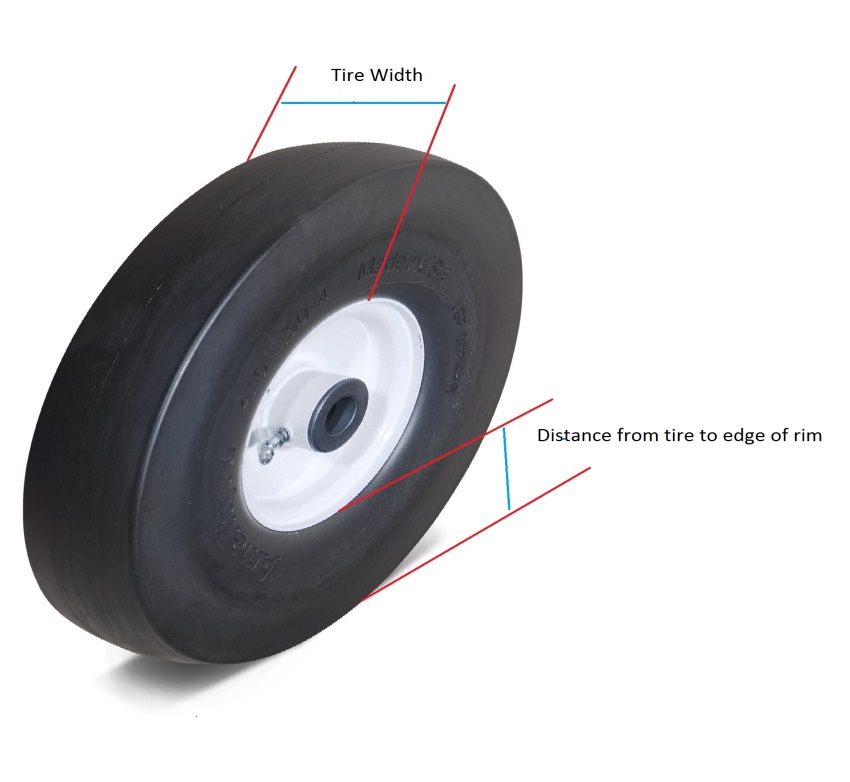 If the tube deflates, the constant bending of a hard tread tire will cause it to deteriorate.
If the tube deflates, the constant bending of a hard tread tire will cause it to deteriorate.
Wheel arrangement
Why do garden roses fall leaves
The choice should be determined by the place for use.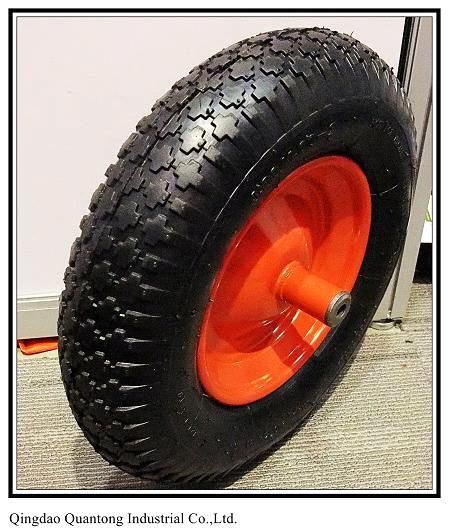 If you have to use on an area with a lot of stones or debris, you should choose a tire with molded rubber or urethane foam. If the area with a lot of bumps, it is better to choose pneumatic.
If you have to use on an area with a lot of stones or debris, you should choose a tire with molded rubber or urethane foam. If the area with a lot of bumps, it is better to choose pneumatic.
Important! The larger the wheel, the easier it is to pull the cart.
One-wheel garden wheelbarrow
When buying a tire, it is necessary to indicate the marking with the pressure with which it can be inflated. Typically, this value is in the range of 25 to 70 P.S.I. However, it is advisable not to inflate more than half of the maximum pressure of the tire.
Garden cart wheels often go bad. For replacement, the following steps will have to be taken:
